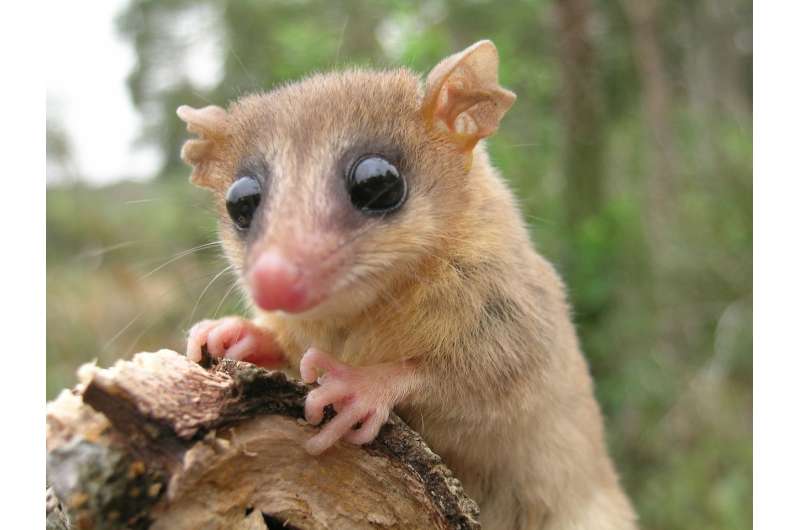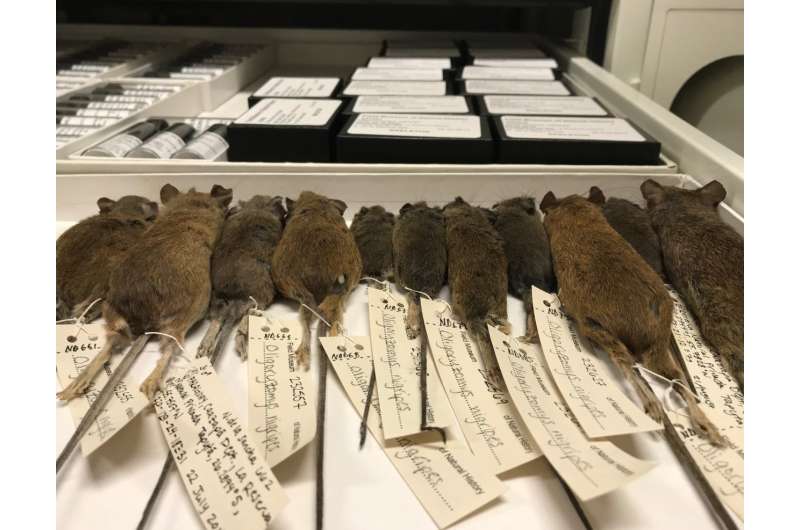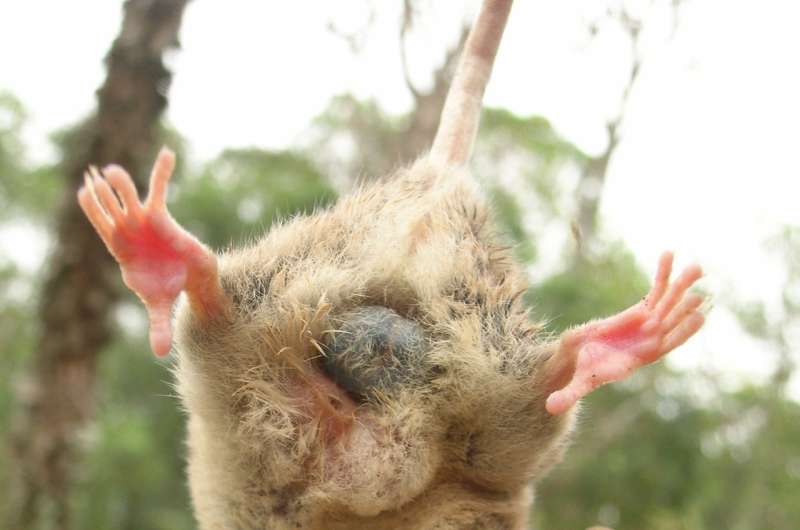Ninety-six scientists co-author paper on rainforest mammals

Imagine your hometown or city's entire population had to live on just one tenth of the land it used to—essentials like food and shelter would quickly go scarce, and it'd be just about impossible for the populace to sustain itself. This, in broad strokes, is what's happening to the flora and fauna of the Atlantic Forest, the second most biodiverse forest system in South America (after the Amazon).
Spanning the Atlantic coast of Brazil into eastern Paraguay and Argentina, the Atlantic Forest once covered roughly 463,000 square miles of habitat. Today, only 8-12 percent of this original habitat space remains. Deforestation poses a substantial threat to the region's native plant and animal species, and for mammals in particular, habitat loss is the main driver of extinction.
This, of course, is a troubling reality for scientists studying the Atlantic Forest's mammals. Worried that species are disappearing at faster rates than they can be studied, 96 of these scientists took collective action and wrote a paper published in Ecology cataloguing traits such as body mass, reproductive attributes, and tail length in mammals native to the Atlantic Forest.
To give a sense of the project's scale: the 96 co-authors of this paper compiled trait information on 39,850 individuals from 279 different mammal species and 388 separate populations.
"This is the first comprehensive dataset of this forest system's mammalian trait data," said Noe de la Sancha, co-author and research associate at the Field Museum in Chicago. "We wanted to create a resource so that scientists wouldn't have to dig through every natural history museum in the country to find these data. It's a stepping stone for future research, putting that out for everybody to use—it's a really big change in science."

De la Sancha explained that when zoologists rely solely on their own data, they're limited in what questions they're able to ask and answer. An example: de la Sancha's research focuses specifically on rodents and marsupials in eastern Paraguay. He's done years of fieldwork, collecting thousands of specimens and authoring dozens of papers along the way. Still, if he wanted to figure out how the small mammals he studies developed their traits over thousands of years, or how they ended up in eastern Paraguay in the first place, he'd need to look for more evidence elsewhere—likely from natural history museums in the U.S. or abroad. This process can be time-consuming and costly.
"For this paper, everyone threw their data into this large, extensive collective," de la Sancha said. "We're putting puzzle pieces together. Having more data available, we can start to ask more interesting questions—questions of ecology and modeling that have more serious impact than cursory descriptors."
Fernando Goncalves, lead author and graduate student at Universidade Estadual Paulista (UNESP) - Sao Paulo State University in Sao Paulo, Brazil, agreed with de la Sancha that this paper expands possibilities for zoological and ecological research.
"Ninety-six authors accepted the challenge to go back to their field notes and send as much information on mammal morphological traits as they could," Goncalves said. "And thanks to them, we'll be able to provide raw data for ecological and evolutionary studies for researchers all over the world."
This paper is a critical—and urgent—step in the right direction, providing scientists with an expansive research toolkit as Atlantic Forest habitats continue to shrink. In turn, these scientists hope to draw attention to the Atlantic Forest as a region to protect, so that they can continue their studies and learn more about the impact of factors like climate change and human activity on these mammal species.

"There's still a great deal we don't know about our biodiversity—and as a consequence, we don't know what we're losing," de la Sancha emphasized. He hopes this paper, on top of serving as a resource for fellow scientists, highlights the importance of mammal species to the Atlantic Forest's ecosystem. He's particularly passionate about small mammals' role in this ecosystem.
"These are the dudes that drive the world," de la Sancha said, pointing to a shelf of rat specimen in his lab. "It's rodents. It's not primates, lions, bears. Rodents are the most important group of mammals, the base of most food chains. They disperse seeds for trees and spores for fungi. They also act as vectors for various kinds of diseases that might affect us. And the best way to target those diseases is studying the rats affected and why."
De la Sancha sees his contributions to this paper as "putting my grain of sand on the beach, so to speak." And his research, along with the other 95 grains of sand that comprise this paper, could make a real, tangible impact on how we study—and care for—the Atlantic Forest.
"Hopefully if these types of papers start getting attention, people will start to value what they have in their backyards," de la Sancha said. "This paper highlights the importance of this forest system, and that could potentially get locals pumped about conserving it."
More information: Ecology (2018). DOI: 10.1002/ecy.2106
Journal information: Ecology
Provided by Field Museum





















